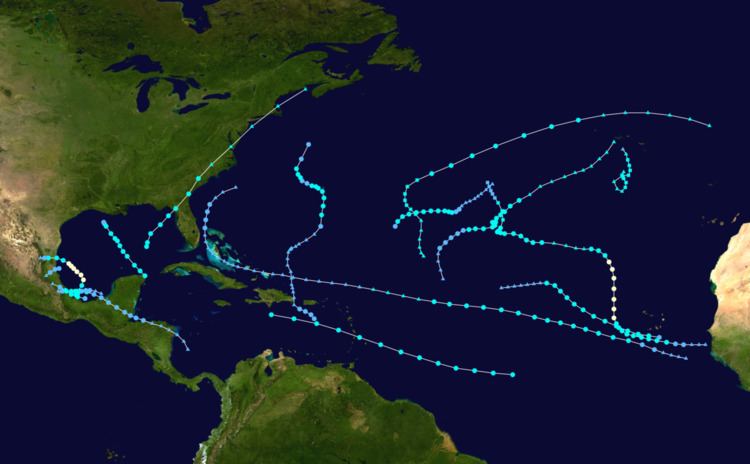 | ||
The 2013 Atlantic hurricane season was a below-average season, featuring the fewest number of hurricanes since 1982. Although Tropical Storm Andrea formed on June 5, the season officially began on June 1 and ended on November 30, dates that conventionally delimit the period of each year when most tropical cyclones develop in the Atlantic basin. The season's final storm, an unnamed subtropical storm, dissipated on December 7.
Contents
The season produced fifteen tropical or subtropical cyclones, of which fourteen intensified into tropical or subtropical storms; two became hurricanes, but none further intensified into major hurricanes, the first such occurrence since the 1994 season. Despite the slow season, Mexico was impacted by numerous tropical cyclones, the worst being Tropical Storm Fernand and Hurricane Ingrid. The former moved ashore in late August, killing 14 and causing millions in damage, while the latter moved ashore in mid-September, killing 23 and causing $1.5 billion (2013 USD) in damage. Only one tropical storm, Andrea, made landfall on the United States during the 2013 season; it killed four and brought tornadoes, heavy rainfall, and flooding to a large section of the East Coast and Atlantic Canada.
This timeline includes information that was not operationally released, meaning that data from post-storm reviews by the National Hurricane Center, such as a storm that was not operationally warned upon, has been included. This timeline documents tropical cyclone formations, strengthening, weakening, landfalls, extratropical transitions, and dissipations during the season.
June
June 1
June 5
June 6
June 7
June 17
June 19
June 20
June 21
July
July 7
July 9
July 10
July 23
July 24
July 25
July 27
August
August 2
August 3
August 15
August 17
August 18
August 25
August 26
September
September 4
September 5
September 6
September 7
September 8
September 9
September 10
September 11
September 12
September 13
September 14
September 15
September 16
September 17
September 18
September 19
September 29
September 30
October
October 1
October 3
October 6
October 21
October 22
October 24
November
November 18
November 20
November 21
November 22
November 30
December
December 5
December 7
